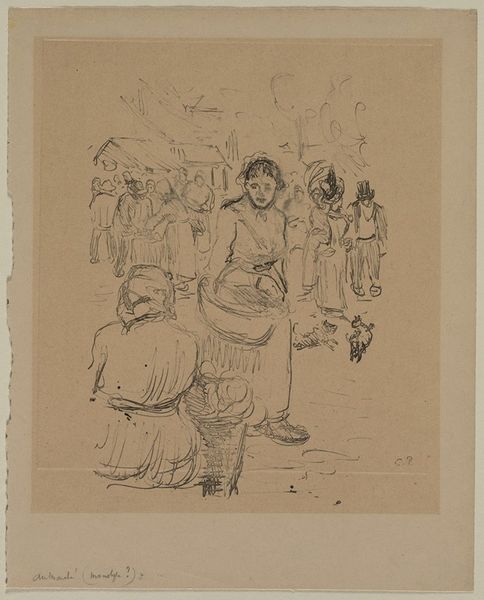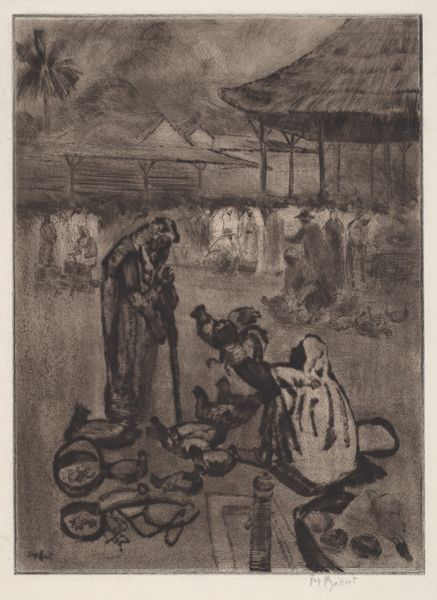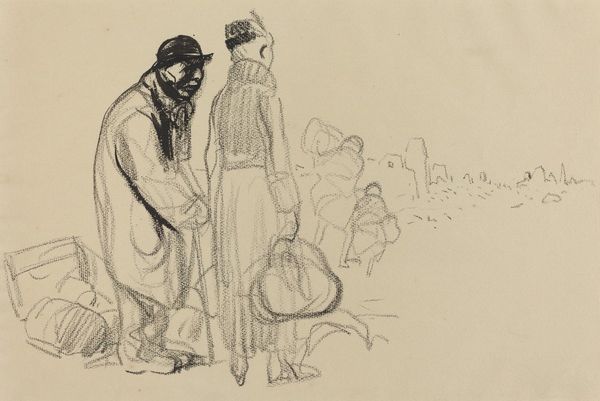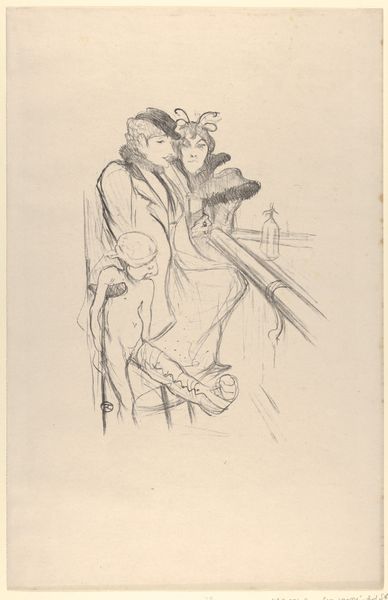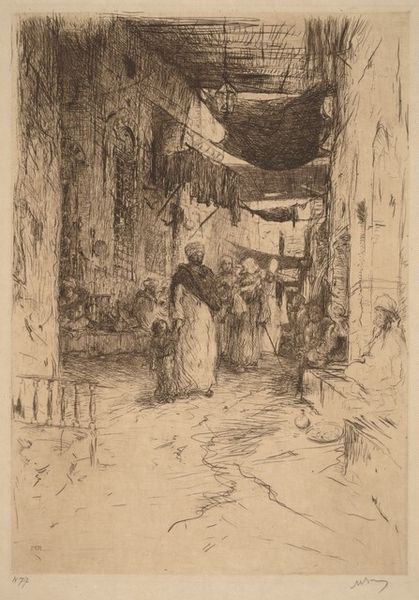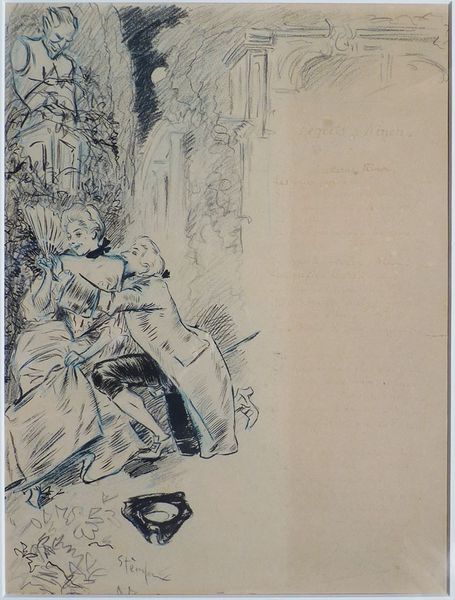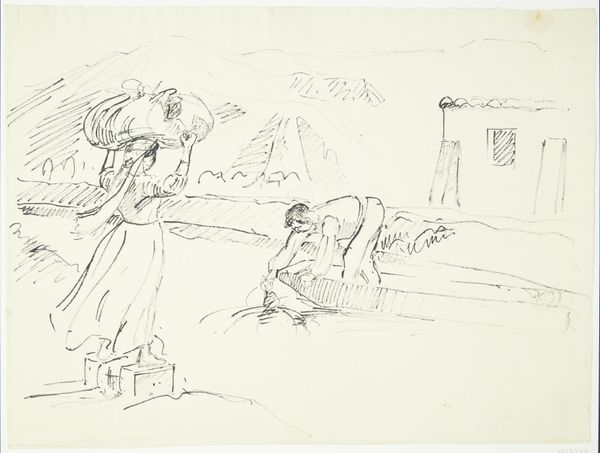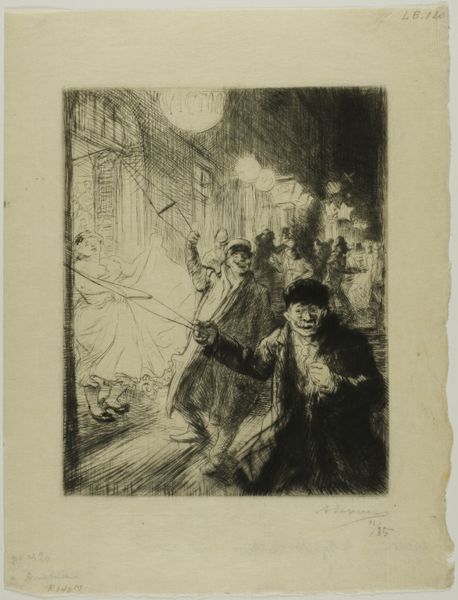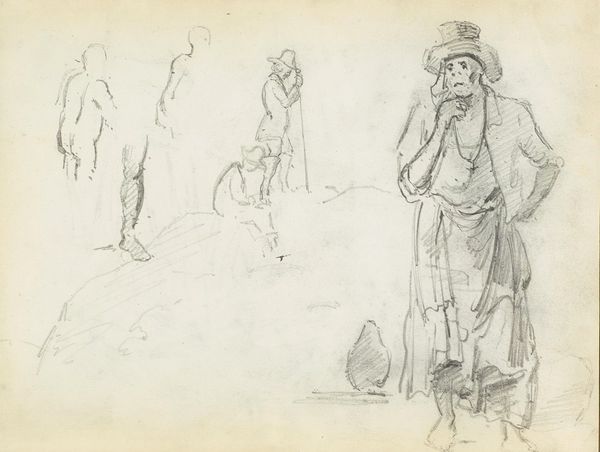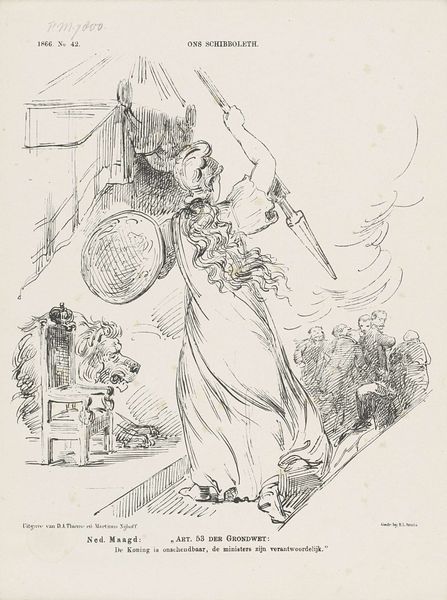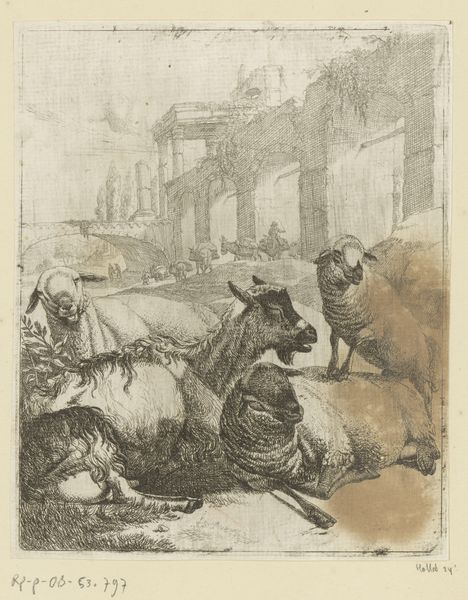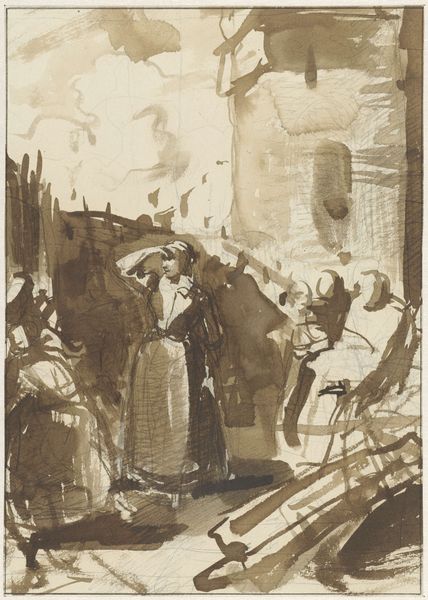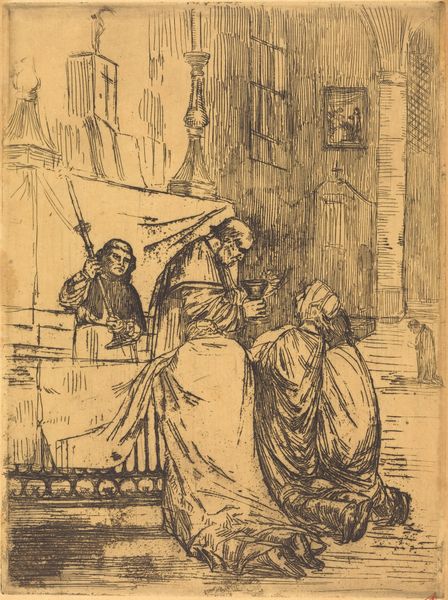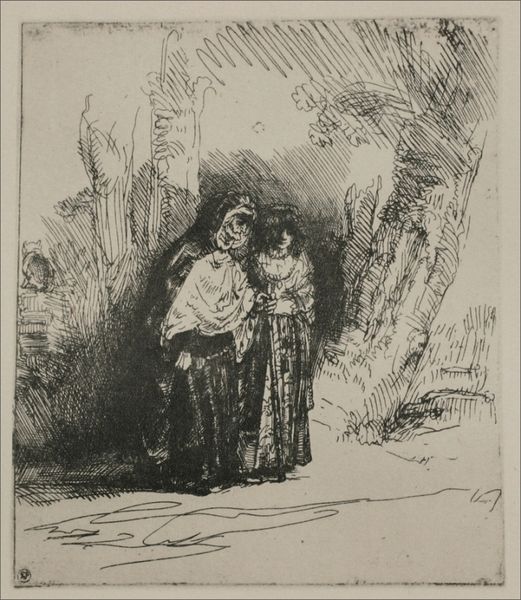
drawing
#
drawing
#
amateur sketch
#
light pencil work
#
pencil sketch
#
incomplete sketchy
#
personal sketchbook
#
ink drawing experimentation
#
pen-ink sketch
#
sketchbook drawing
#
sketchbook art
#
fantasy sketch
Copyright: Public Domain: Artvee
Editor: Here we have "The Laundress," a drawing from 1888 by Henri de Toulouse-Lautrec. It looks like it's just pencil on paper. I’m struck by how casual it seems, like a quick sketch, but the woman feels so present. What's your take on this piece? Curator: It’s deceptively casual. Lautrec's sketches, even seemingly simple ones like this, offer fascinating insights into the lives of working-class Parisians and the social structures of the time. Think about the choice of subject – a laundress. Why immortalize *her*? Editor: Because these types of subject were often excluded by the "grand" narratives of the time? It shows something new. Curator: Exactly. Lautrec challenges the traditional hierarchy of artistic subjects, bringing the marginalized into view. The laundress embodies the working class, whose labor was the engine of Parisian society, but often rendered invisible in art. Now, how does Lautrec position *her* within the image? Editor: Well, she's definitely the focal point, even with the other figures and carts in the background. The composition directs our eye straight to her. I'm also struck by her gaze—she's looking *outward*, almost meeting the viewer's eye. Curator: Precisely! This active gaze is crucial. It rejects the objectification that often plagued representations of women, especially working-class women. It almost invites dialogue, forcing us to confront our own gaze and the social realities it reflects. The setting and rendering are important also. This looks like Paris, maybe the outskirts or the edges of modern city planning. Do you think that changes your opinion on how society viewed her? Editor: Yes, you're right. Seeing the broader context and thinking about the politics of representation, it transforms the way I see the drawing. Thanks! Curator: Indeed! And thinking of Lautrec's personal background helps in appreciating what it might have meant for an aristocrat to be this involved in drawing such members of the population. These sketchbook images become so much more than sketches.
Comments
No comments
Be the first to comment and join the conversation on the ultimate creative platform.
